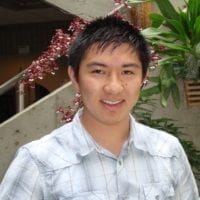
Utilizing breakpoint detection algorithms to locate structural variations in wild and cultivated cucumbers
What makes each organism and species unique is their genetic makeups. The majority of these differences can be attributed to structural variations (SVs). Ranging in types from duplications to insertions and deletions, the SVs influence what genotypes are included and thus what phenotypes will be expressed. In an effort to document which genes give strength or weakness, it is important that these SV are identified and annotated. With this kind of information, evolution and population structures can be inferred as well as be utilized in marker-assisted breeding. In this project, the focus will be on detecting deletions, a type of SVs, in a cultivated cucumber, Cucumis sativus L, and a wild cucumber. Several years back, the genome of cucumber was successfully sequenced and annotated; recently the genome for the wild species was sequenced using next-generation methods. Using certain properties from the next-gen sequencing, the two genomes can be aligned to each other. In order to detect the deletions, previously published literatures were surveyed in order to find the appropriate algorithm. Pindel, developed by The Genome Institute at Washington University, was picked for detecting breakpoints in the alignment to location and measure the deletions. Later on, other algorithms were implemented to extract and filter key information, such as breakpoint location and deletion length, based on certain parameters. The result is a list of genes and phenotypes that were lost in the wild type.
My experience at BTI is the first one that was more focused on the computational aspect of research. While I do have quite a bit of background in programming, it was the first time I used perl and various pipelines such as Samtools and Pindel. It took some time to pick them up, but once I understood them I could see how useful and powerful they are in research. This was also my first time collaborating with a full lab. From what I was used to, it was just one on one interactions with my mentor; this time I had a whole team to ask questions and work with. This served as a reminder that research is not a solo act but a group effort. Having the opportunity to work in Dr. Fei’s lab has strengthened my desire to commit to real world research that combines biology and computer science.
